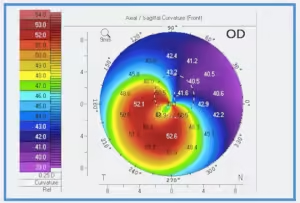

Myopia is a common eye condition that causes blurred distance vision, also known as short-sightedness. In recent years, eye care professionals have identified an alarming increase in the prevalence of progressive myopia in children and adolescents. So much so, it has been predicted that by 2050 more than half of the world’s population will have myopia, and alarmingly 10% will develop high myopia that can potentially lead to legal blindness.
Progressive myopia is characterised by the continuous and rapid worsening of near-sightedness that begins in early childhood and steadily increases as a child grows. This can lead to significant visual impairment and increased risk of serious eye-related complications such as retinal detachment, glaucoma and myopic maculopathy.
Studies show that children with one myopic parent are approximately 2.5 times more likely to develop myopia. This risk increases to 3.5 times more likely if both parents are myopic. While family history plays a significant role in determining the risk of developing myopia, modern lifestyle changes and environmental factors are thought to be influencing the recent increase in the prevalence of childhood myopia.
Prolonged near tasks such as excessive amounts of reading and use of electronic devices, combined with less time spent outdoors in natural sunlight may increase the risk of progressive myopia in children and adolescents
As the prevalence of progressive myopia continues to rise, parents play a pivotal role in protecting their children’s eye health. Fortunately, there are a few simple strategies parents can implement to promote healthy vision and eye development:
The aim of progressive myopia treatments is not just to correct vision, but to slow down the rate of myopic progression. If a child has more than 1 dioptre of myopia by age 5, additional myopia treatment options should be considered.
Read about additional myopia management in our next blog: Exploring Progressive Myopia Treatment Options.
Copyright © 2023 Nexus Eye Care | Trans4m Business Consulting – Website Design & SEO | Privacy Policy | ^